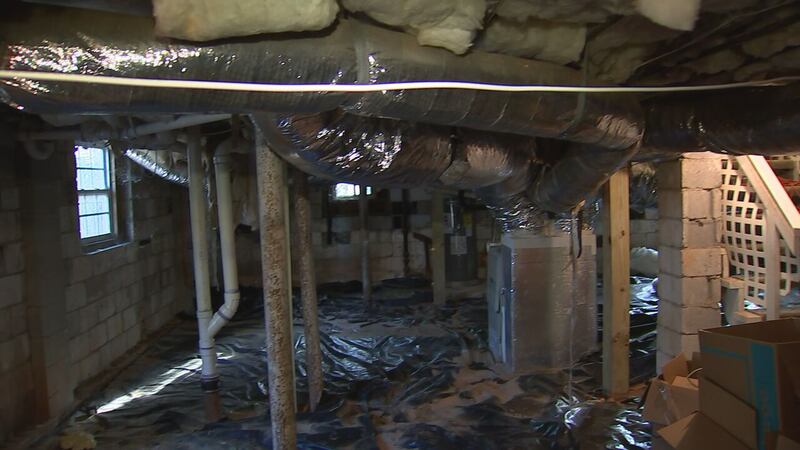ATLANTA — The U.S. government agency that investigates plane crashes says an inexpensive piece of equipment would save lives.
But another government agency will not require it.
Channel 2 consumer investigator Justin Gray learned the NTSB has been fighting for nearly 20 years to require carbon monoxide detectors in small airplanes.
They cost a few hundred dollars and can prevent carbon monoxide poisoning which has led to dozens of deadly crashes.
Matthew Dekle vividly remembers the last time he spoke with his father Millwood.
“He called me from the runway and said, ‘I’m on the runway. I’m about to take off,’” Matthew Dekle said.
About an hour later, Greg Wyatt saw Millwood Dekle’s plane flying erratically above his antique store in Jasper County.
He thought at first it was a stunt plane.
[HAVE A STORY FOR 2 INVESTIGATES? Submit your tip here]
“He was low. And the wings would tilt back and forth some,” Wyatt said.
He saw the plane go down.
Wyatt and his daughter tried to rush to the scene of the crash.
“We all were in panic mode trying to locate and see if we could help,” Wyatt said.
By the time he got there, it was too late.
But it was months later before Matthew Dekle learned what caused his father’s deadly plane crash.
“Found out by the death certificate,” Matthew Dekle said.
It was carbon monoxide poisoning according to that death certificate and a later NTSB investigation.
MORE FROM 2 INVESTIGATES:
- Alpharetta property management company responds to water leak, mold complaints
- Empty gift cards tied to Atlanta-based company. How were they drained before hitting store shelves?
- Company repossessing cars bought at closed dealership. Car owners say they’ve never heard of them
- Senators demand answers from Social Security for clawbacks tied to COVID relief checks
Deckle’s is one of at least 31 crashes and 42 deaths tied to carbon monoxide on small planes by the NTSB.
“I just woke up and I thought I was flying,” said pilot Dan Bass, who is one of the few to survive one of these crashes.
The flying instructor said he thought he had caught a cold from his toddler or was suffering a caffeine withdrawal headache.
“It turned out that by the time I was getting symptoms, my cognitive ability was knocked down just enough that I never made the connections,” Bass said.
There is a simple fix. Just like your home, you can get a carbon monoxide detector for a plane.
“It’s available, developed, proven technology,” said Jeff Marcus, the chief of the NTSB’s Safety Recommendations Division.
“We have accident experience that shows that carbon monoxide leaks happen and that they bring down airplanes,” said Marcus.
In 2022, the NTSB sent a letter to the FAA recommending a rule requiring all small planes have a carbon monoxide detector onboard.
NTSB made the same recommendation before in 2004.
“The standards are already there. The products are already there. Everything has been done, but the requirement for it,” Marcus said.
But so far, the FAA has refused to require detectors, only recommending them.
The FAA’s position is that regular maintenance and inspections would catch any carbon monoxide leaks.
“I think that if there is a problem in between inspections, then you’re dead,” Matthew Dekle said.
“It just doesn’t make sense that every plane is not you know required to have something as inexpensive as that would be,” Wyatt said.
“This is the plane you fly your family in?” Gray asked former fighter pilot and current airline pilot Erik Schilling.
“It is,” Schilling said, showing Gray the easy, inexpensive carbon monoxide detector he keeps in his personal plane. “It’s a carbon monoxide detector that has a Bluetooth capability. And so, it’s always sniffing the air in the cabin alerting to any potential carbon monoxide.”
He said he wants to eliminate as many risks when he’s flying with his family as possible.
“My 16-month-old daughter is probably the most important thing in the world to me. So, $300 investment it’s cheap insurance,” Schilling said.
Dan Bass said he always flies with carbon monoxide detectors. But he said many of the pilots he talks to aren’t aware of either the technology or the risk without it.
“You know, everything’s fine until it breaks, and it doesn’t break right before it goes into maintenance, you know?” Bass said.
The FAA told Channel 2 Action News that it is continuing to evaluate the data and will update NTSB in May 2024.
But for Matthew Dekle it’s not complicated. He believes a FAA requirement for carbon monoxide detectors could have saved his father’s life.
“If he had a warning, he could have landed,” Matthew Dekle said.
The NTSB said without a requirement it’s hard to track how many people have voluntarily installed the detectors in their planes.
Schilling and Bass said pilots are taught to watch for signs of poisoning, but Bass learned firsthand that his ability to do that was impaired by carbon monoxide.
IN OTHER NEWS:
©2023 Cox Media Group





